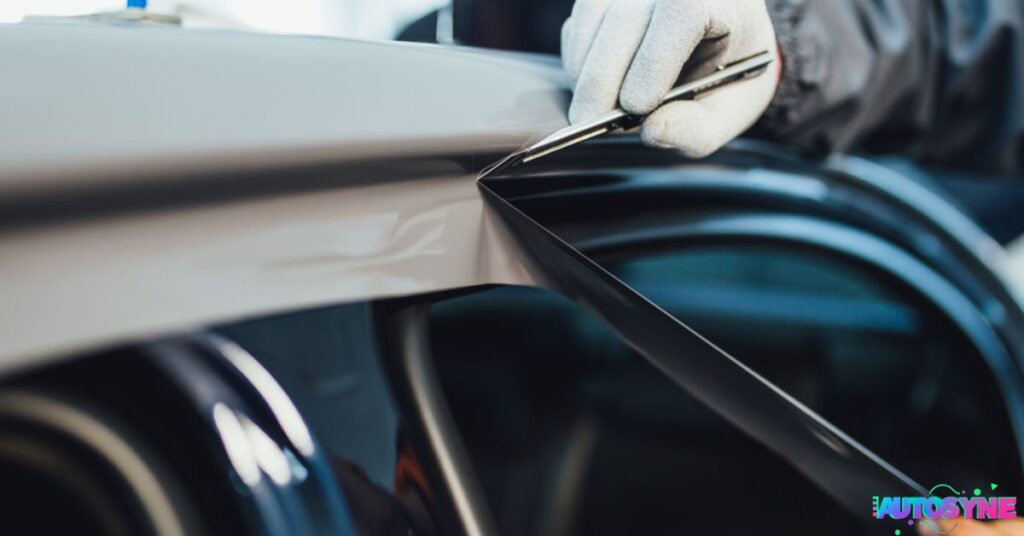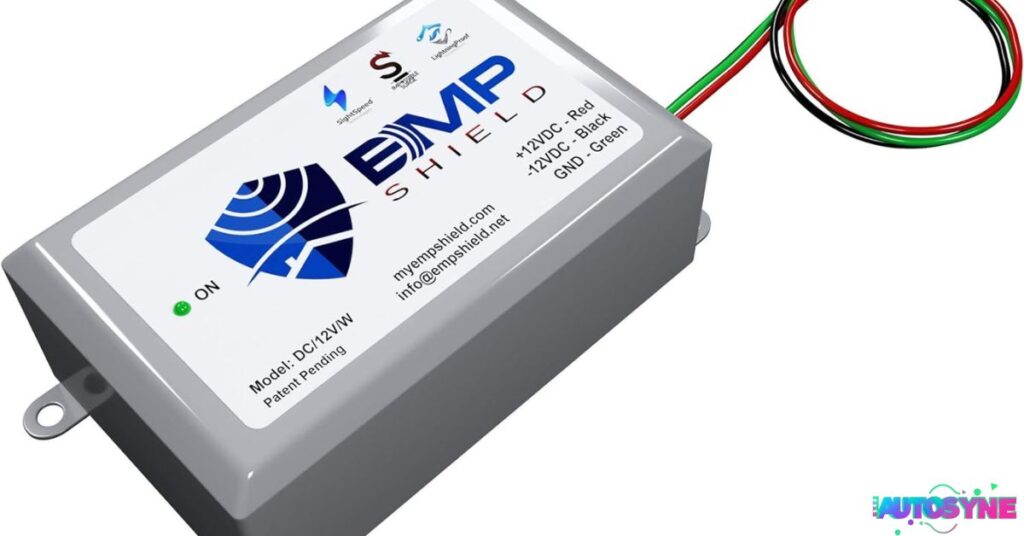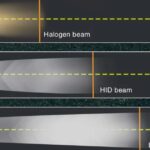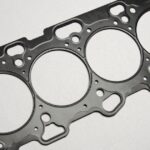Protecting your car from EMP damage is important because EMPs can harm electronic parts in your vehicle. They can come from natural events like solar flares or from human made sources like nuclear explosions. But don’t worry, there are simple ways to keep your car safe from EMPs.
Curious about safeguarding your car from electromagnetic pulse (EMP) attacks? You are in the right place. In this concise guide, we will analyze effective strategies to shield your vehicle from EMP damage.
By implementing simple yet powerful techniques, you can ensure your car remains resilient against electromagnetic threats. Stay tuned as we reveal essential tips to protect your car and keep it safe from potential EMP disasters.
Ways To Protect Your Car From An EMP Attack
Here are simple ways to keep your car safe from an EMP attack:
Cover Exposed Areas With Aluminum Foil
To shield your car from an EMP attack, cover exposed areas with aluminum foil. This simple step helps create a protective barrier against electromagnetic pulses. Wrap aluminum foil around vulnerable components such as windows, windshields, and other exposed surfaces.
This helps prevent the penetration of harmful electromagnetic waves into your vehicle’s electronic systems.
Store A Spare Vehicle Wrapped In Foil

To keep your car safe from EMP attacks, store an extra vehicle wrapped in foil. This means covering the spare car completely with aluminum foil. This helps create a protective barrier called a Faraday cage, which shields the car’s electronics from electromagnetic pulses.
With a foil wrapped backup vehicle, you will have reliable transportation even during an EMP event. It’s a simple but effective way to prepare for unexpected emergencies.
Read This Blog: Understanding Mobile Mechanic Prices: A Concise Guide
Eliminate Potential Transmission Points In Your Garage
Make your garage safer from EMP attacks by removing potential transmission points. This means getting rid of things that could let electromagnetic pulses damage your car’s electronics.
Check for permanent lighting, electrical wiring, and other pathways for EMP waves. Taking these steps helps protect your car and lowers the chance of EMP-related damage.
Stick To Regular Vehicle Maintenance Routines
Stick to regular vehicle maintenance routines to keep your car safe from EMP attacks. This involves following your usual schedule for car care, such as oil changes, tire rotations, and engine checks.

By staying on top of maintenance, you can ensure that your vehicle is in optimal condition to withstand any potential electromagnetic threats. Regular upkeep also helps identify and address any issues before they become larger problems, enhancing the overall resilience of your car.
Consider Older Models With Fewer Electronic Systems
Consider older models with fewer electronic systems to protect your car from EMP attacks. These vehicles have simpler electronic setups, making them less susceptible to EMP damage.
Opting for an older model with a carburetor and mechanical components can reduce the risk of electronic failure during an EMP event. By choosing a car with fewer electronic systems, you can enhance its resilience and ensure reliable transportation in emergency situations.
Stay Informed And Prepared For Any Scenario
Stay informed and prepared for any scenario, including EMP attacks, to safeguard your car. Keep yourself updated on potential threats and emergency preparedness measures. This includes understanding the risks of EMP events and knowing how to respond effectively.
By staying informed and proactive, you can take steps to protect your vehicle and yourself in the event of an emergency. Remember to stay vigilant and prepared for any situation that may arise.
Solder A Small Surge Tube Across Vulnerable Components
Protect vulnerable components by soldering a small surge tube across them. This simple method helps divert excess current away from critical parts of your vehicle, reducing the risk of damage during an EMP attack.
Focus on components such as the rear defroster or radio antenna, which are particularly susceptible to EMP-induced surges. By implementing this precautionary measure, you can enhance the resilience of your car’s electronics and minimize the impact of electromagnetic pulses.
Build A Faraday Shield Garage For Your Vehicle

Build a Faraday shield garage to keep your vehicle safe from EMP attacks. This means making a garage out of materials that block electromagnetic pulses. Use aluminum siding and tin roofing for the best protection. You can also add aluminum-backed insulation inside.
By creating a Faraday shield garage, you’ll protect your car and anything else inside from EMP damage. It is an easy way to keep your vehicle safe in case of an emergency.
Install An EMP Shield
Install an EMP shield to protect your vehicle from electromagnetic pulse (EMP) attacks. This device is designed to divert excessive power from an EMP away from your car’s electrical system, preventing damage.
The EMP shield undergoes rigorous military testing to ensure effectiveness against various types of EMP threats, including solar flares and nuclear detonations. With this small but powerful device installed, your entire vehicle is shielded from EMP-induced damage, providing peace of mind during uncertain times.
Also Read: How To Transfer A Car Loan?
What Is An Electromagnetic Pulse (EMP)?

An electromagnetic pulse (EMP) is a sudden burst of electromagnetic energy that can disrupt electronic devices. EMPs can occur naturally from events like solar flares or be generated by human-made sources such as nuclear explosions.
They consist of three pulses, each with different characteristics. These pulses can damage or destroy electronic components, posing a threat to modern technology. Understanding EMPs is crucial for preparing against potential disruptions they may cause.
E1
An electromagnetic pulse (EMP) is a sudden burst of energy that can mess up electronic devices. EMPs can happen naturally, like when the sun burps, or they can come from human-made stuff, like nuclear explosions.
The first pulse, called E1, happens when radiation from the explosion mixes with the air and makes a strong electric zap. This zap can fry electronic parts, which is bad news for our gadgets. Knowing about EMPs and their different pulses helps us get ready for any trouble they might cause.
E2
An electromagnetic pulse (EMP) is a sudden burst of energy that can mess up electronic devices. EMPs can happen naturally, like when the sun burps, or they can come from human made stuff, like nuclear explosions. The second pulse, known as E2, is similar to the electric zap from lightning strikes.
It happens because of special particles produced during the explosion. This zap can also fry electronic parts, causing big problems for our gadgets. Understanding EMPs and their different pulses helps us prepare for the chaos they can cause.
E3
An electromagnetic pulse (EMP) is a sudden burst of energy that can disrupt electronic devices. EMPs can happen naturally or be caused by human-made events like nuclear explosions. The third pulse, E3, occurs when the explosion disrupts the Earth’s magnetic field, causing a slow but powerful surge of electricity.
This surge can damage electronics over a longer period. Understanding EMPs and their different pulses helps us prepare for their potential effects on our devices.
Choose The Right Vehicle
When selecting a vehicle, opt for one with fewer electronic components to better withstand EMP attacks. Older models with mechanical systems, like carburetors instead of electronic fuel injection, are more resilient.

Avoid vehicles with extensive electronic systems that could be vulnerable to EMP damage. By choosing a vehicle with simpler electronics, you increase its chances of surviving an EMP event unscathed.
Gas Or Diesel?
When considering fuel options for your vehicle in preparation for an EMP attack, both gas and diesel have their pros and cons. Gasoline vehicles are more common and easier to find, but gasoline tends to spoil faster than diesel.
Diesel vehicles, on the other hand, can run on biodiesel made from organic waste, providing a potential long-term fuel source. Ultimately, the choice between gas and diesel depends on factors such as availability, storage options, and personal preference.
EMP Variables
- Proximity to detonation point: The closer the target area is to the source of the EMP, the greater the intensity of the pulse experienced.
- Height and direction of detonation: The altitude and angle of the explosion relative to the target area can significantly influence the spread and strength of the EMP.
- Gamma-ray output: The quantity of gamma radiation emitted during a nuclear detonation plays a crucial role in determining the severity of the EMP’s effects.
- Earth’s magnetic field strength: Variations in the Earth’s magnetic field can impact how EMP waves propagate and interact with electronic systems.
- Infrastructure susceptibility: The susceptibility of infrastructure and electronic devices to EMP effects varies, depending on factors such as design, shielding, and resilience measures in place.
EMP Protection For Cars

Protecting cars from EMPs involves using strategies like installing surge protection devices, choosing older models with fewer electronics, and building Faraday shield garages. Regular maintenance and storing spare vehicles wrapped in foil also help safeguard against EMP damage, ensuring vehicle reliability during emergencies.
In The Garage
In the garage, you can take steps to shield your vehicle from EMP damage. Consider creating a Faraday cage by eliminating potential transmission points for EMPs. This involves removing permanent lighting, wires in the walls, and electricity from the garage.
Alternatively, you can store backup parts in small, portable Faraday cages to replace any electronics that might get fried during an EMP event.
By implementing these measures, you can enhance the protection of your vehicle against electromagnetic pulses while it’s parked in the garage.
Are Military Vehicles EMP Proof?
Military vehicles often incorporate EMP-hardened designs and features to withstand electromagnetic pulses (EMPs) more effectively than civilian vehicles. These vehicles undergo rigorous testing and are equipped with shielding and protective measures to mitigate the effects of EMPs.

it is important to note that no vehicle can be entirely EMP-proof, as the intensity and proximity of the EMP event can vary significantly. While military vehicles may have a higher level of resilience compared to civilian ones, they are not immune to EMP damage in all circumstances.
Frequently Asked Questions
Can You Make A Vehicle EMP Proof?
While it’s challenging to make a vehicle completely EMP-proof, you can take certain measures to enhance its resilience against electromagnetic pulses (EMPs). These include installing surge protection devices, such as EMP shields, and using shielding materials like aluminum foil to cover vulnerable components.
What Material Can Block An EMP?
Materials with high electrical conductivity, such as copper and aluminum, are effective at blocking electromagnetic pulses (EMPs). Additionally, thick layers of metal, such as steel, can provide substantial shielding against EMPs.
What Is The Best Protection Against EMP?
The best protection against EMPs involves using a combination of measures, including installing surge protection devices like EMP shields, building Faraday cages using conductive materials, and minimizing exposure to electronic devices during an EMP event.
Will Aluminum Foil Protect Electronics From EMP?
Yes, aluminum foil can provide some protection against electromagnetic pulses (EMPs) by acting as a makeshift Faraday cage. By wrapping electronic devices in multiple layers of aluminum foil, you can help shield them from the effects of EMPs.
What Is The Best Material For A Faraday Cage?
Conductive materials like copper, aluminum, and galvanized steel are commonly used for constructing Faraday cages. These materials effectively block electromagnetic fields and provide reliable protection for electronic devices.
Does EMP Shield Really Work?
EMP shield is a surge protection device designed to divert excess energy from electromagnetic pulses (EMPs) away from electronic systems. While its effectiveness may vary depending on factors like installation and the intensity of the EMP event, many users report positive results with EMP shield in protecting their electronics.
How To Fix A Car After An EMP?
Fixing a car after an EMP event involves assessing the extent of damage to electronic components and making necessary repairs or replacements. This may include repairing wiring, replacing fried electronic modules, and ensuring proper grounding to prevent future damage from EMPs.
Conclusion
while achieving complete EMP-proofing for vehicles may be challenging, implementing a combination of protective measures significantly enhances their resilience against electromagnetic pulses.
Whether it is installing surge protection devices like EMP shields, constructing Faraday cages using conductive materials, or taking proactive steps to minimize exposure to electronic devices during EMP events, there are various strategies available to safeguard vehicles from potential damage.
By staying informed, prepared, and proactive, individuals can mitigate the risks posed by EMPs and ensure the reliability of their vehicles in emergency situations. Remember, every step taken towards EMP protection brings us closer to securing our vehicles and maintaining peace of mind in the face of unforeseen challenges.

Thomas is a seasoned automotive writer with five years of expertise. His passion for cars fuels insightful articles on industry trends, technology, and driving experiences.







